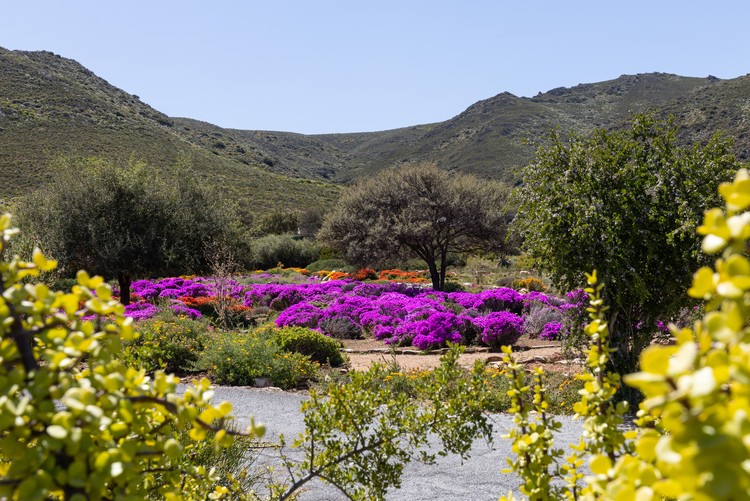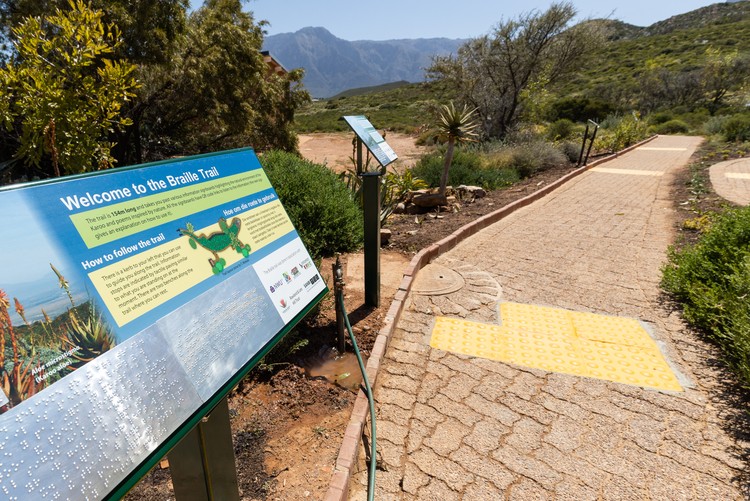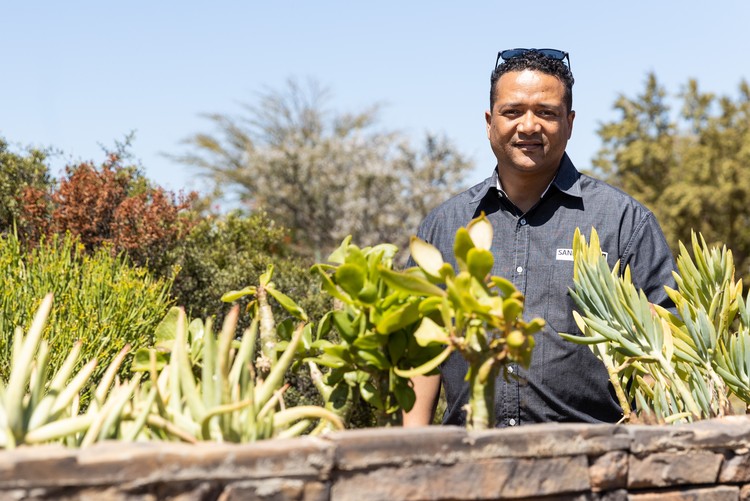Braille trail launched in Worcester
The trail at a popular botanical garden is accessible to people who use wheelchairs and people who are blind or visually impaired
The magnificent Karoo Desert National Botanical Garden in Worcester is becoming more accessible to people with disabilities. Photos: Ashraf Hendricks
- A braille trail was launched on 30 September at the Karoo Desert National Botanical Garden in Worcester.
- The 154m trail is easily accessible to blind people and people who use wheelchairs.
- All the information boards are available in braille and audio.
The Karoo Desert National Botanical Garden is a spectacular showcase of flora from South Africa’s arid and semi-arid regions. Located in Worcester, the garden is famous for its kokerboom, succulents, aloes and bright coloured vygies (when in season). And with a brand new braille trail, these attractions have become more accessible than ever.
Designed for blind or visually impaired people and people who use wheelchairs, the 154m long trail was launched on 30 September. Visitors to the trail are treated to a sensory experience with plants and rocks that can be touched and aromatic plants that can be smelled.
“The main attraction is the explanations of our plants,” said Ricardo Riddles, Garden Manager at the Karoo Desert National Botanical Garden. He explains that what makes this trail different is that people can interact with the storyboards. “You can read it in braille, you can read it in words, but you can also listen … using a QR code,” he said. These educational inserts are translated to English and Afrikaans and some of the audio transcriptions are in Dutch.
Along the lizard shaped pathway, recorded recitals by local poets can be listened to. David Kramer, who was born in Worcester, is one of the artists and has recorded a song for the trail. All of this is easily accessible with the use of raised flower beds which means people don’t have to bend down to touch the the plants on the ground. And while similar trails depend on a rope for direction, this trail uses a brick curb and tactile paving to guide people.
Riddles says that the design was created with help from the Pioneer School for the Visually Impaired in Worcester. The trail cost about R330,000 to build. This covered items such as the paving, the erection of the flowerbeds, benches and trees.
The Braille Trail is about 150m long.
Fifteen-year-old Jeanne-Chayil Arendse is a grade 9 learner at the Pioneer school. She started losing her eyesight in 2016, and is blind today. “I really enjoyed it,” she said. She used a cane to navigate through the trail. She said that she really appreciated the raised flower beds, making the plants easy to touch. Her favorite part of the trail was the textured rocks.
Arendse said that she has been to many parks that are not accessible to blind people and she would need to use a guide to get around and orientate herself. This isn’t ideal, she says. “Sometimes you just don’t want people around you and you just want to connect with nature.” Arendse hopes that there will be more accessible parks in the future. Trails like this help “my people connect with the world and nature,” she says.
The idea for the braille trail originated in 2014, but the project only received funding in 2021. Some of this funding came from the Rowland and Leta Hill Trust, the Cape Winelands Municipality and the Botanical Society of South Africa.
Riddles said that he feels relieved now that it’s complete but there is more that he wants to do. “Currently the garden is about 20% wheelchair friendly. I want to push that to a higher level … to 80%“. But to achieve this, he says it will require a lot more funding.
Ricardo Riddles wants about 80% of the garden to eventually be accessible. That will require a lot more funding.
Next: No shelter for homeless people in Knysna, but that may change soon
Previous: Government officials cannot hide behind the sub judice rule
© 2022 GroundUp. This article is licensed under a Creative Commons Attribution-NoDerivatives 4.0 International License.
You may republish this article, so long as you credit the authors and GroundUp, and do not change the text. Please include a link back to the original article.
We put an invisible pixel in the article so that we can count traffic to republishers. All analytics tools are solely on our servers. We do not give our logs to any third party. Logs are deleted after two weeks. We do not use any IP address identifying information except to count regional traffic. We are solely interested in counting hits, not tracking users. If you republish, please do not delete the invisible pixel.





